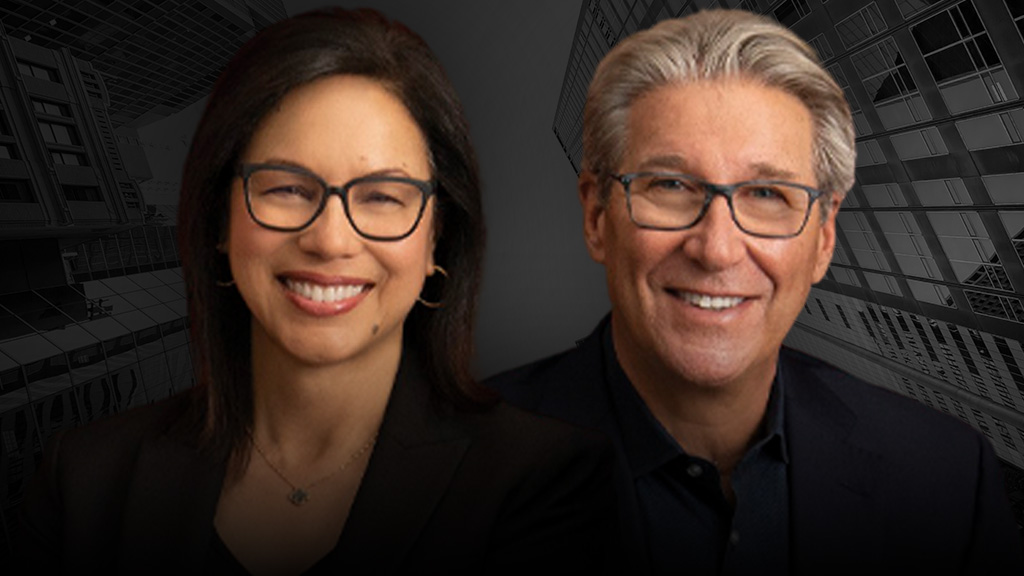Diane Hoskins & Andy Cohen
Co-chairs of Gensler
As the largest architecture firm in the world, Gensler works on a wide variety of projects worldwide.
I recently chatted with Diane Hoskins and Andy Cohen, the global co-chairs of the world’s most influential architecture design planning firm, Gensler. Our wide-ranging conversation covered everything from collaborative leadership to which sectors are innovating quickly.
Gensler’s adaptive reuse projects
Gensler and many others in the real estate space face the same issue: office demand is incredibly high for class-A properties. In contrast, the demand for class B and C office spaces has been lagging tremendously. Gensler has been taking on several adaptive reuse projects to drive demand in former class B and C office spaces.
This all began in Calgary when the Canadian government hired Gensler to research the conversion of vacant office buildings to help fight their tremendous housing shortage. To do this, Gensler designed a bespoke tool that rates a building on a scale of 1-100 in about 30 minutes, with any score over 80 meaning indicating that the building is a good candidate for conversion. This tool allows developers to gauge whether a conversion is viable in just a few minutes rather than a few weeks. Over time, this tool got some traction from US developers and the US government.
Which sector is innovating quickly?
As the largest architecture firm in the world, Gensler works on a wide variety of projects worldwide, from stadiums to universities, and everything in between. Naturally, I wanted to know which sector was innovating the most rapidly. Andy believes that the title should go to experience-related spaces right now. After COVID lockdowns expired, people began looking for top-tier experiences everywhere, from stadiums and hotels to university campuses. In the “experiences” niche, Andy believes that airports are innovating the fastest, with Gensler taking on over 35 airport projects since the end of the pandemic.
What makes Gensler’s co-leadership stand out?
When you navigate to the website of the largest architecture firm in the world, you might expect to see all the impressive projects the company has worked on. However, instead of skyscrapers and stunning stadiums, you see the people who work at Gensler.
Gensler is a people-oriented business with a very unconventional leadership structure. Andy and Diane built this company together as co-CEOs, and when they decided to step down, they chose a new pair of co-CEOs to fill their roles. This unique choice was driven by the fact that nearly every role at Gensler has a co-role. In the world of architecture, everything is a partnership.
Want more?
I thoroughly enjoyed my conversation with Diane and Andy, just as I regularly enjoy conversations with movers and shakers in multiple industries in episodes of the Walker Webcast. To see the list of upcoming guests, subscribe to the Walker Webcast!

Design for a Radically Changing World
Lorem ipsum dolor sit amet, consectetur adipiscing elit. Suspendisse varius enim in eros elementum tristique. Duis cursus, mi quis viverra ornare, eros dolor interdum nulla, ut commodo diam libero vitae erat. Aenean faucibus nibh et justo cursus id rutrum lorem imperdiet. Nunc ut sem vitae risus tristique posuere.
Lorem ipsum dolor sit amet, consectetur adipiscing elit. Suspendisse varius enim in eros elementum tristique. Duis cursus, mi quis viverra ornare, eros dolor interdum nulla, ut commodo diam libero vitae erat. Aenean faucibus nibh et justo cursus id rutrum lorem imperdiet. Nunc ut sem vitae risus tristique posuere.
Diane and Andy created this essential guide for those looking to harness the power of design to create positive change. Now more than ever – with the evolution of office and workspaces as we know it – this book is an important read! Plus, it looks great on your coffee table!
Related Walker Webcasts
Affordable Housing’s Next Era with Jonathan F.P. Rose & Scott J. Alter
Learn More
December 3, 2025
Real Estate
Investing in the Next Phase of CRE with Tom Gilbane
Learn More
September 17, 2025
Real Estate
Homebuilding for an Aging America with Ryan Marshall
Learn More
September 10, 2025
Real Estate
Insights
Check out the latest relevant content from W&D
News & Events
Find out what we're doing by regulary visiting our News & Events pages
